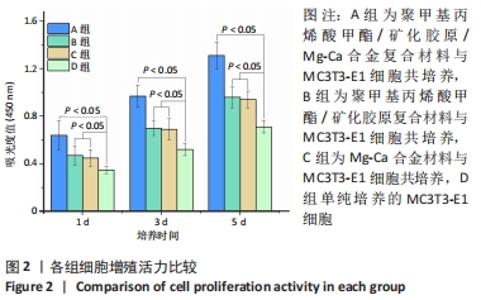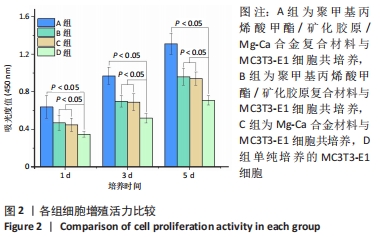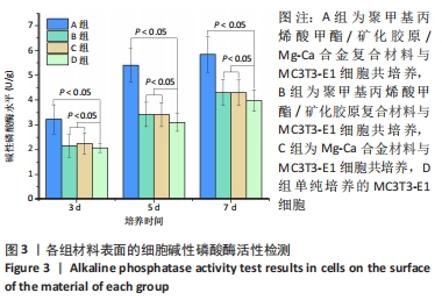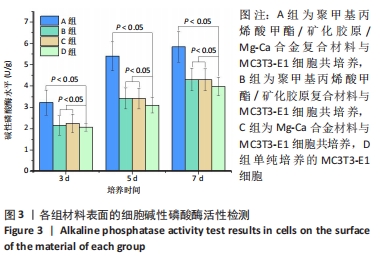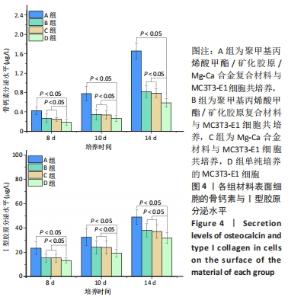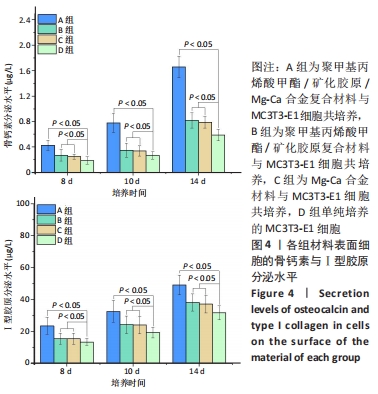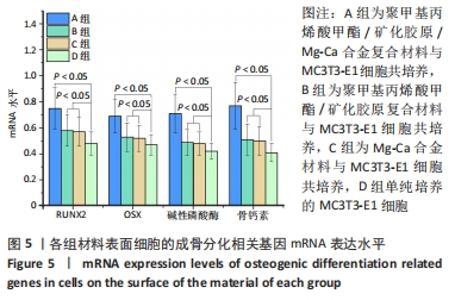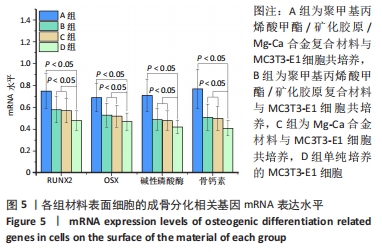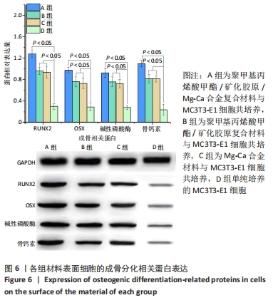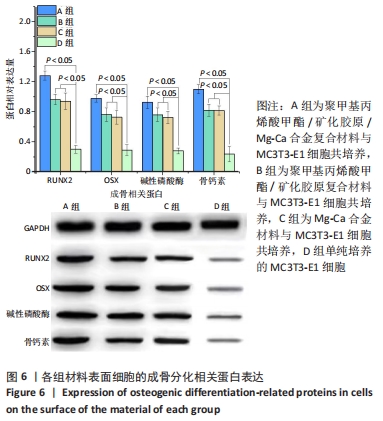[1] 董航,黄嘉华,麦喆钘,等.载骨碎补总黄酮磷酸钙骨水泥对骨缺损模型大鼠诱导膜中成骨细胞分化的影响及其机制研究[J].中国药房,2019,30(10):30-36.
[2] ZHOU Z, ZANG H, WANG S, et al. Filtration Behaviour of Cement-Based Grout in Porous Media. Transport Porous Med. 2020;125(3):435-463.
[3] JU J, ZHANG L, SHI H, et al. Three-dimensional porous carbon nanofiber loading MoS_2 nanoflake- flowerballs as a high-performance anode material for Li-ion capacitor. Appl Surf Sci. 2019;484(1):392-402.
[4] TRUDEL G, UHTHOFF HK, SOLANKI S, et al. The effects of knee immobilization on marrow adipocyte hyperplasia and hypertrophy at the proximal rat tibia epiphysis. Acta Histochem. 2017;119(7):759-765.
[5] 方栋,孙良业,谢肇.载万古霉素骨水泥间隔器治疗跟骨创伤后骨感染的疗效[J].中华创伤杂志,2019,35(2):109-114.
[6] ANDRULEWICZ-BOTULIŃSKA E, WIŚNIEWSKA R, BRZÓSKA MM, et al. Beneficial impact of zinc supplementation on the collagen in the bone tissue of cadmium‐exposed rats. J Appl Toxicol. 2021;38(7):996-1007.
[7] DONG S, GAO X, MA Z, et al. Ice-templated porous silicate cement with hierarchical porosity. Mater Lett. 2020;217(15):292-295.
[8] 李树源,周琦石,陈超,等.负载抗生素聚甲基丙烯酸甲酯骨水泥间隔器和链珠治疗胫骨创伤性骨髓炎并Ⅰ度骨缺损效果比较[J].临床误诊误治,2019,32(8):39-44.
[9] SHEAFI EM, TANNER KE. Relationship between fatigue parameters and fatigue crack growth in PMMA bone cement. Int J Fatigue. 2020;120(3): 319-328.
[10] 于晴,郭昌武,杨静馨,等.矿化胶原与镁钙合金的复合材料应用于犬拔牙位点保存的实验研究[J]. 中国临床解剖学杂志,2017,35(5): 532-542.
[11] NIE X, SUN X, WANG C, et al. Effect of magnesium ions/Type I collagen promote the biological behavior of osteoblasts and its mechanism. Regen Biomater. 2020;7(1):53-61.
[12] 高山,周方,吕扬,等.新型多孔聚甲基丙烯酸甲酯骨水泥的制备及性能分析[J].中国组织工程研究,2019,23(2):46-52.
[13] PAHLEVANZADEH F, BAKHSHESHI-RAD HR, ISMAIL AF, et al. Development of PMMA-Mon-CNT bone cement with superior mechanical properties and favorable biological properties for use in bone-defect treatment. Mater Lett. 2020;240(1):9-12.
[14] LU L, BI S, XU X, et al. Coordination polymer derived Ni based composite material with N-doped mesoporous carbon as matrix for pollutants removal. J Porous Mat. 2020;26(1):205-215.
[15] 张佰开,王玮,姜帅,等.新型PMMA抗紫外复合材料的制备及表征[J].塑料工业,2018,46(12):153-157.
[16] 李浩亮,王西彬,左瑞庭.负载重组人骨形态发生蛋白2磷酸钙骨水泥与纤维蛋白胶复合材料促进骨质疏松性骨折的愈合[J].中国组织工程研究,2019,23(14):2156-2161.
[17] 孟冰,刘趁心,杨照,等.新型骨水泥椎弓根螺钉在治疗腰椎滑脱合并骨质疏松症的应用研究[J].现代生物医学进展,2019,19(8):86-91.
[18] 沈浩.具有部分降解功能的Mg-PMMA复合骨水泥的制备及表征研究[D].苏州:苏州大学,2017.
[19] SHEN Y, SUN X, BAO J, et al. Study on Degradation Behavior and Biocompatibility of Polymethyl Methacrylate Nano-Hydroxyapatite Collagen Magnesium-Calcium Alloy Composite Material. J Biomater Tiss Eng. 2020;(10):139-150.
[20] BELLUCCI D, SOLA A, GAZZARRI M, et al. A new hydroxyapatite-based biocomposite for bone replacement. Mater Sci Eng C Mater Biol Appl. 2021;33(3):1091-1101.
[21] YANG Y, ZHU X, ZHANG B, et al. Electrocatalytic properties of porous Ni-Co-WC composite electrode toward hydrogen evolution reaction in acid medium. Int J Hydrogen Energ. 2020;44(36):19771-19781.
[22] 盛珺,刘达,郑伟,等.唑来膦酸联合骨水泥钉道强化椎弓根螺钉用于骨质疏松腰椎融合术的疗效[J]. 解放军医学杂志,2018,43(12): 62-66.
[23] SHENG W, XU Q, CHEN J, et al. Electrochemical sensing of hydrogen peroxide using nitrogen-doped graphene/porous iron oxide nanorod composite. Mater Lett. 2021;235(15):137-140.
[24] 杨勇,林新源,曾婷,等.针麻复合局麻应用于经皮椎体成形术的临床效果及安全性[J].广东医学,2018,39(19):2976-2980.
[25] 陈枭,徐涛,雷华,等.多功能nanoZnO/PMMA复合材料的制备与性能[J].复合材料学报,2018,35(2):245-252.
[26] BAIGALIEV BE, TEMNIKOVA SV, CHERENKOV AV, et al. Unit-Cell Simulation of the Thermal Conductivity Processes in Porous Composite Materials. High Temp. 2021;56(4):538-545.
[27] REZNICHENKO AN, LUGOVAYA MA, PETROVA EI, et al. Lead-free porous and composite materials for ultrasonic transducers applications. Ferroelectrics. 2020;539(1):93-100.
[28] 毛璐,张伯松,姜璐,等.载万古霉素骨水泥的人体局部释放及全身药物浓度监测[J].中国医院药学杂志,2019,39(3):31-33.
[29] WANG X, KOU JM, YUE Y, et al. Clinical observations of osteoporotic vertebral compression fractures by using mineralized collagen modified polymethylmethacrylate bone cement. Medicine. 2020;97(37):e12204.
[30] WU J, XU S, QIU Z, et al. Comparison of human mesenchymal stem cells proliferation and differentiation on poly(methyl methacrylate) bone cements with and without mineralized collagen incorporation. J Biomater Appl. 2021;30(6):722-731.
[31] YU Q, WANG C, YANG J, et al. Mineralized collagen/Mg-Ca alloy combined scaffolds with improved biocompatibility for enhanced bone response following tooth extraction. Biomed Mater. 2020;13(6): 065008.
[32] GUO C, YU Q, SUN B, et al. Evaluation of Alveolar Bone Repair with Mineralized Collagen Block Reinforced with Mg–Ca Alloy Rods. J Biomater Tiss Eng. 2020;8(1):1-10.
[33] WANG CY, SUN Y, CHEN Z, et al. Application of the Magnesium Rod and Porous Mineralized Collagen Plug in Site Preservation in Dogs. J Biomater Tiss Eng. 2020;6(3):171-179.
[34] TAO C, QIU Z, MENG Q, et al. Mineralized Collagen Incorporated Polymethyl Methacrylate Bone Cement for Percutaneous Vertebroplasty and Percutaneous Kyphoplasty. J Biomater Tiss Eng. 2019;4(12):1100-1106.
[35] BALASUNDARAM G, STOREY DM, WEBSTER TJ. Novel nano-rough polymers for cartilage tissue engineering. Int J Nanomed. 2019;9: 1845-1853.
|


